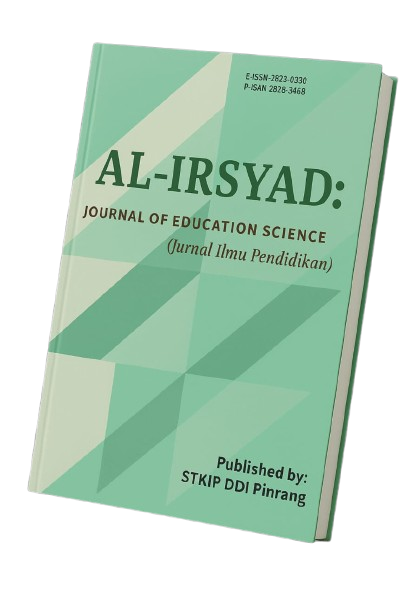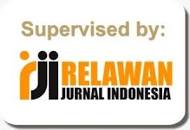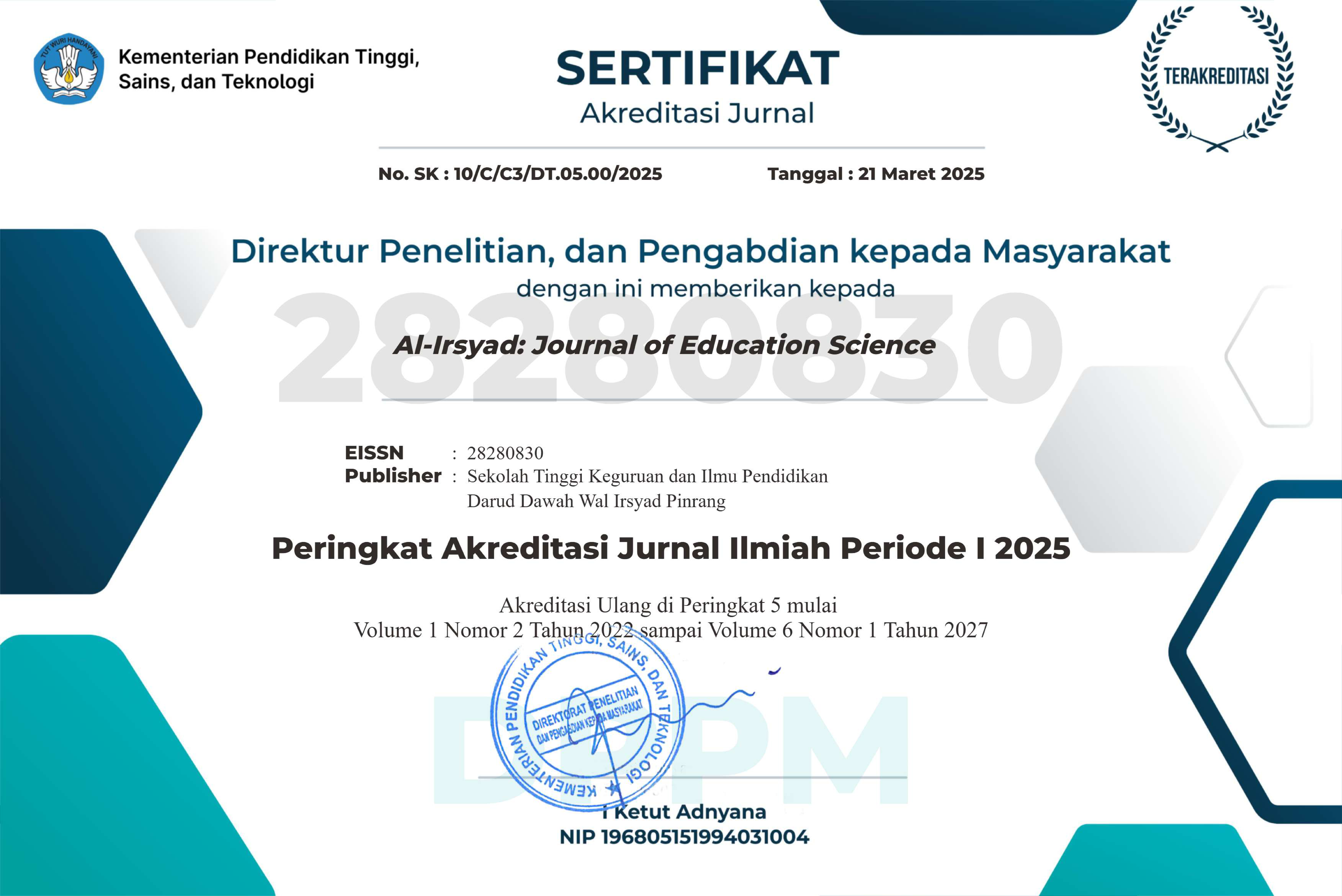STUDENTS’ PERCEPTIONS ON REPEATED READING AND READING FLUENCY IN ENGLISH CLASS
DOI:
https://doi.org/10.58917/aijes.v4i2.383Kata Kunci:
English Class, Reading Fluency, Repeated Reading, Students’ PerceptionsAbstrak
As one of the main skills in English, reading is needed for the students. By having reading fluency, students can comprehend reading passage. In order to be fluent in reading, it is needed to have frequent practices. Repeated reading is as the main technique to have reading fluency. The students practice reading passages several times. The aim of this study is to discover students’ reading fluency through repeated reading. This study was a survey research. This study used a questionnaire consisting of closed-ended questionnaire and open-ended questionnaire. The results of this study were students got more fluent in reading by having several practices on repeated reading. The students read accurately the words and sentences in English with correct intonation. They also became more fluent in the pronunciation. While having repeated reading, the students improved vocabularies and understood the meaning of the words. Their comprehension of reading also increased.
Referensi
Astiantih, S., Hamid B., L. O. M. I., Yetty, & Sofyan, W. N. P. (2022). Improving Reading Comprehension by using Experience Text Relationship (ETR). ELS Journal on Interdisciplinary Studies in Humanities, 5(2), 271–276. https://doi.org/10.34050/elsjish.v5i2.21150
Ayuba, H., & Kadir, L. (2022). The Implementation of Choral Reading Method in Improving Student’s Reading Fluency. JETLI: Journal of English Teaching and Linguistic Issues, 1(2), 47–65. https://doi.org/10.58194/jetli.v1i2.75
Bessette, H. J. (2020). Using Choral Reading to Improve Reading Fluency of Students with Exceptionalities. Georgia Journal of Literacy, 43(2). https://doi.org/10.56887/galiteracy.22
Canuto, P. P., Lumidao, Y., Ballagan, A., Calya-En Jr., P., Laoyan, R. K., & Oplas, A. (2024). Enhancing Elementary Students’ Oral Reading Fluency through Repeated Reading and Big Books. International Journal of Learning, Teaching and Educational Research, 23(4), 376–393. https://doi.org/10.26803/ijlter.23.4.20
Clemens, N. H., Simmons, D., Simmons, L. E., Wang, H., & Kwok, O. (2017). The Prevalence of Reading Fluency and Vocabulary Difficulties Among Adolescents Struggling With Reading Comprehension. Journal of Psychoeducational Assessment, 35(8), 785–798. https://doi.org/10.1177/0734282916662120
Creswell, J. W. (2012). Educational Research: Planning, Conducting, and Evaluating Quantitative and Qualitative Research. Pearson Education, Inc.
Duffy, M. A., Mazzye, D. L., Storie, M., & Lamb, R. L. (2024). Professional Development and Coaching in the Science of Reading: Impacts on Oral Reading Fluency in Comparison to National Norms. International Journal of Instruction, 17(1), 533–558. https://doi.org/10.29333/iji.2024.17128a
Fabillaran, K. C. (2024). Reading Profile Assessment: The Interplay Of Fluency, Vocabulary, And Comprehension Among Junior High School Learners. Psychology of Education: A Multidisciplinary Journal, 19(3), 296–305. https://doi.org/10.2139/ssrn.5184471
Gedik, O., & Akyol, H. (2022). Reading Difficulty and Development of Fluent Reading Skills: An Action Research. International Journal of Progressive Education, 18(1), 22–41. https://doi.org/10.29329/ijpe.2022.426.2
Hidayat, I. N. (2013). Pengaruh Teknik Repeated Reading terhadap Kemampuan Reading Fluency pada Siswa Kelas III Sekolah Dasar. PSYMPATHIC: Jurnal Ilmiah Psikologi, 6(1), 766–775. https://doi.org/10.15575/psy.v6i1.2134
Hulu, A., Laoli, A., Harefa, A. T., & Zebua, E. P. (2023). Improving the Students’ Reading Fluency of Recount Text through Multimedia Running Text at the Tenth Grade of SMA Negeri 1 GunungSitoli in 2022/2023. AoEJ: Academy of Education Journal, 14(2), 1069–1083.
Ibrahim, M. W., Abdullah, U., & Amalia, H. (2024). Factors Causing Reading Comprehension Difficulties among the Seventh Graders. PROJECT (Professional Journal of English Education), 7(2), 496–501.
Ja’afar, H. (2016). Repeated Reading: Enhancing Fluency Development of Struggling Readers of Differing Socio Economic Status. Proceedings of the First Reciprocal Graduate Research Symposium, 127–142.
Karma, C. P. F. (2017). Assessing Students’ Reading Fluency. METATHESIS, 1(1), 30–45.
Kelzang. (2024). Enhancing Reading Fluency of Seventh Grade Students: An Action Research. Asian Journal of Education and Social Studies, 50(12), 374–386. https://doi.org/10.9734/ajess/2024/v50i121706
Kocaarslan, M. (2017). A Research about Oral Reading Fluency of First Grade Students : Text Type and Gender Factor. Journal of Education and Practice, 8(23), 40–51.
Kuswardani, H. P., Suprapti, V., & Paramita, P. P. (2023). The Effectiveness of a Combined Intervention Approach for Improving Reading Fluency in Elementary School Students. Psikostudia : Jurnal Psikologi, 12(3), 341–348. https://doi.org/10.30872/psikostudia.v12i3.11033
Li, L., & Doyle, A. (2021). Reading Fluency and the Role of Its Dimensions: Conceptualizations and Mechanisms. Canadian Journal for New Scholars in Education, 12(1), 78–84.
Molapisi, G. (2024). Teaching Strategies for Enhancing Reading Fluency and Comprehension among Learners with Mild Hearing Impairment in Mainstream Classrooms. International Journal of Learning, Teaching and Educational Research, 23(9), 453–471. https://doi.org/10.26803/ijlter.23.9.23
O’Connor, R. E. (2018). Reading Fluency and Students With Reading Disabilities: How Fast Is Fast Enough to Promote Reading Comprehension? Journal of Learning Disabilities, 51(2), 124–136. https://doi.org/10.1177/0022219417691835
Ostovar-Namaghi, S. A., Hosseini, S. M., & Norouzi, S. (2015). Reading Fluency Techniques from the Bottom-Up: A Grounded Theory. International Journal of Applied Linguistics and English Literature, 4(5), 29–35. https://doi.org/10.7575/aiac.ijalel.v.4n.5p.29
Paige, D. D., & Magpuri-Lavell, T. (2014). Reading Fluency in the Middle and Secondary Grades. International Electronic Journal of Elementary Education, 7(1), 83–96.
Prameswari, I. D., & Akhiriyah, S. (2023). The Correlation between Reading Fluency and Students’ Reading Comprehension in Junior High School. Journal of English Teaching, Literature, and Applied Linguistics, 7(2), 39–45. https://doi.org/10.30587/jetlal.v7i2.5944
Spenda, N., & Sandravelis, A. (2023). The Importance of Reading Fluency and Its Assessment through Silent Reading. International Journal of Humanities and Social Science Invention (IJHSSI), 12(1), 9–14. https://doi.org/10.35629/7722-12010914
Virdaus, V. V., & Rifa’i, S. (2021). The Fluency of Oral Reading with Natural Reader Software. Journal of Development Research, 5(2), 156–163. https://doi.org/10.28926/jdr.v5i2.190
Wymer, J. (2022). Using Repeated Readings to Support Fluency and Comprehension. Learning to Teach, 11(1), 54–61. http://openjournals.utoledo.edu/index.php/learningtoteach/article/view/547%0Ahttp://openjournals.utoledo.edu/index.php/learningtoteach/article/download/547/365
Unduhan
Diterbitkan
Cara Mengutip
Terbitan
Bagian
Lisensi
Hak Cipta (c) 2025 Paskalina Widiastuti Ratnaningsih

Artikel ini berlisensi Creative Commons Attribution 4.0 International License.























